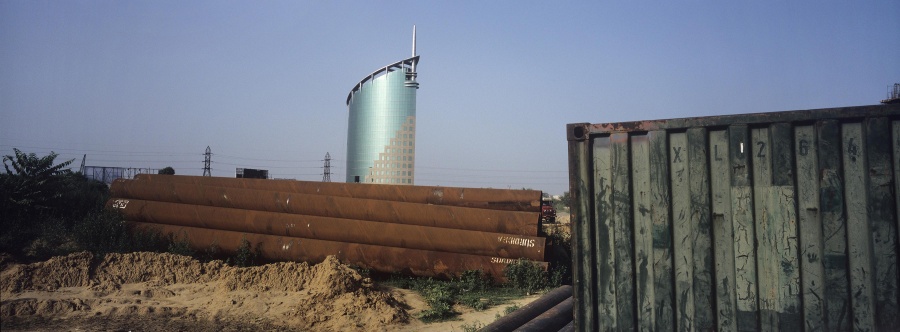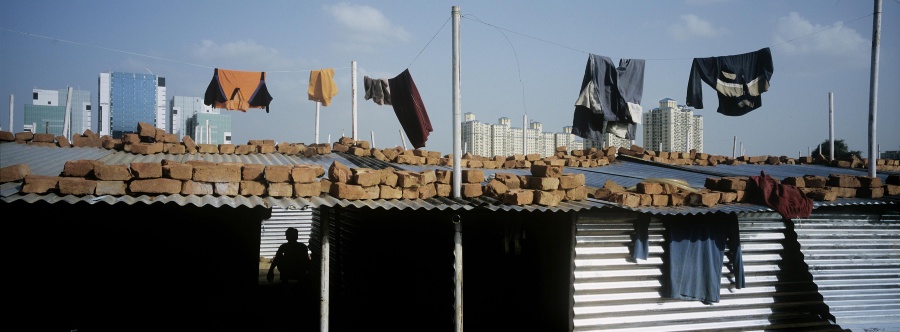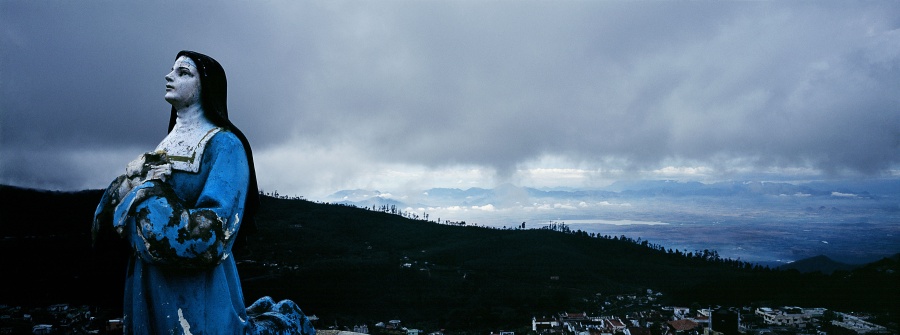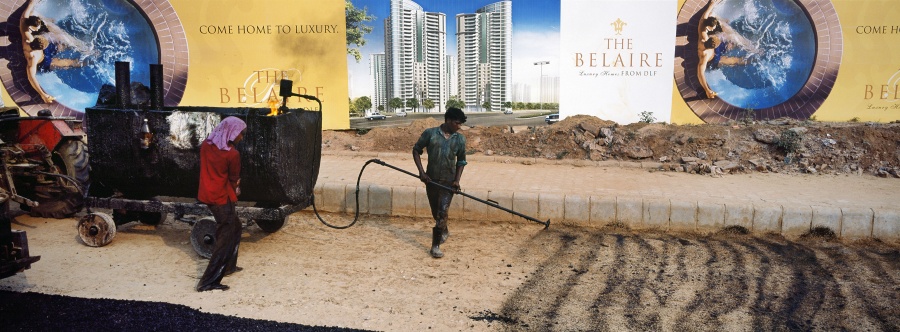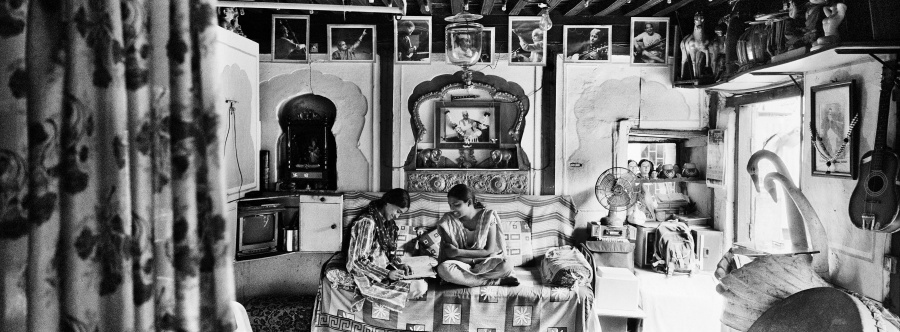Slideshow: PAN INDIA Photographs by Prashant Panjiar
Times and Tides in the World of Photography
A frank interview with Prashant Panjiar, Delhi Photo Festival co-founder and World Press Photo 2016 Judge.
Often times, on home ground and behind the scenes, there are people with their heads down doing real home work. You hear good of them not through trendy international circles or self-promotional hype, but from regular homegrown folks. One such is Prashant Panjiar, veteran photographer and co-founder of Delhi Photo Festival. People have described him as accessible and a good friend to young photographers in India. When World Press Photo announced their 2016 contest jury, it was wonderful to see Prashant’s name on the list, alongside Sim Chi Yin from Singapore, for the documentary category. The time seemed right to have a nice long chat with Prashant so I dropped him a message. Prashant obliged without hesitation and gave us a most candid and frank interview, as described in our title, on the times and tides in the world of photography.
The interview was conducted with Kevin WY Lee over Skype. The following transcript has been edited for length and clarity.
Kevin WY Lee: You were recently on the jury for World Press Photo. Tell us a bit about the experience of judging and on the work you saw. Has much changed since you last judged over a decade ago in 2002?
Prashant Panjiar: This year I was in the specialist pre-jury not the general jury which actually picks the winner. The pre-jury sorts out the first two rounds of judging – picking out the better stuff to pass onto the general jury. So I was part of a five person jury in the documentary section. We basically looked at two categories – daily life and contemporary issues. There are other specialist jury like news, people, sports, nature and stuff like that. The chairperson from each specialist jury, and one other member, carries onto the general jury to ensure some continuity. In 2002, I was in the general jury. They are two different processes. In 2002, we were still looking at prints and slides. Now we’re only looking at digital and nothing else. The specialist jury at that time was only just five people.
But having said that, there is a problem. Not just the World Press Photo. But it’s a problem that you all know about and have been talking about for years. The problem has to do with media itself. With the devaluation, so to speak, of media. And the devaluation of any of the other things related to it also. The World Press Photo in 2002 was great and was very important. It does not have the same kind of importance now. I’m not talking about importance in terms of where it stands in the world and all, but in the photographers’ community itself. The photographers’ community now does not see photojournalism or journalism as being so important. So that seems to be an issue. The result of that is, though you get a lot of entries and submissions, the quality seems to have deteriorated. Also, because I guess the kind of reportage et cetera that is done in newspapers and magazines, and that the World Press Photo relies on you being professional and accredited in some way, it will by its own definition, invite submissions from people who are in mainstream photojournalism itself. Whereas the very idea of what is documentary photography is way beyond that. For instance, in India there are plenty of fashion photographers who do editorial work, but I never see a submission from them. Never. Because they don’t think it is something to do with them.
So there are two issues. One is that with the devaluation of media or what the press is, there is a certain devaluation of the institutions related to it. World Press Photo being one of them. Therefore, some of the good people are not or no longer submitting probably. We see the results and the work is good. But when you see the entire thing, you see that quite a bit of the submissions are poor. I’m not talking about poor in terms of imaging, but being formulaic; people following a formula. It’s boring quite often. It’s not thought out. There’s not much depth. The past many years now, a lot of the interesting and good documentary and editorial work which should come into the World Press Photo is done outside of mainstream journalism. For example, a lot of people are working on long term projects for non-profits. And traditionally, the people who are in the know have always submitted their work. But somehow, that knowledge has slipped somewhere. For instance in India, my friend said some interesting work one would have expected to come in has not come in because they heard that World Press Photo will not accept the work because they are not journalists, or traditional photojournalists. I’m just raising a couple of problems that one noticed this time.
Having said that, the World Press Photo is a fantastic institution. It’s a non-profit. It has all its fundamentals right. It has all its intentions good. So it is something that I personally want to support and be invested in. And see how we can motivate more people, and better people, to sending in work. That needs to happen I think. Now you can’t change the name. But to make people participate requires a certain opening up – the idea that the World Press Photo is not limited to a certain kind of press photography. And two, you loosen up a little bit and not insist on accreditation as a criteria for participation, which deters people. Of course, it might open that up to even more crap coming in but that’s something one has to deal with.
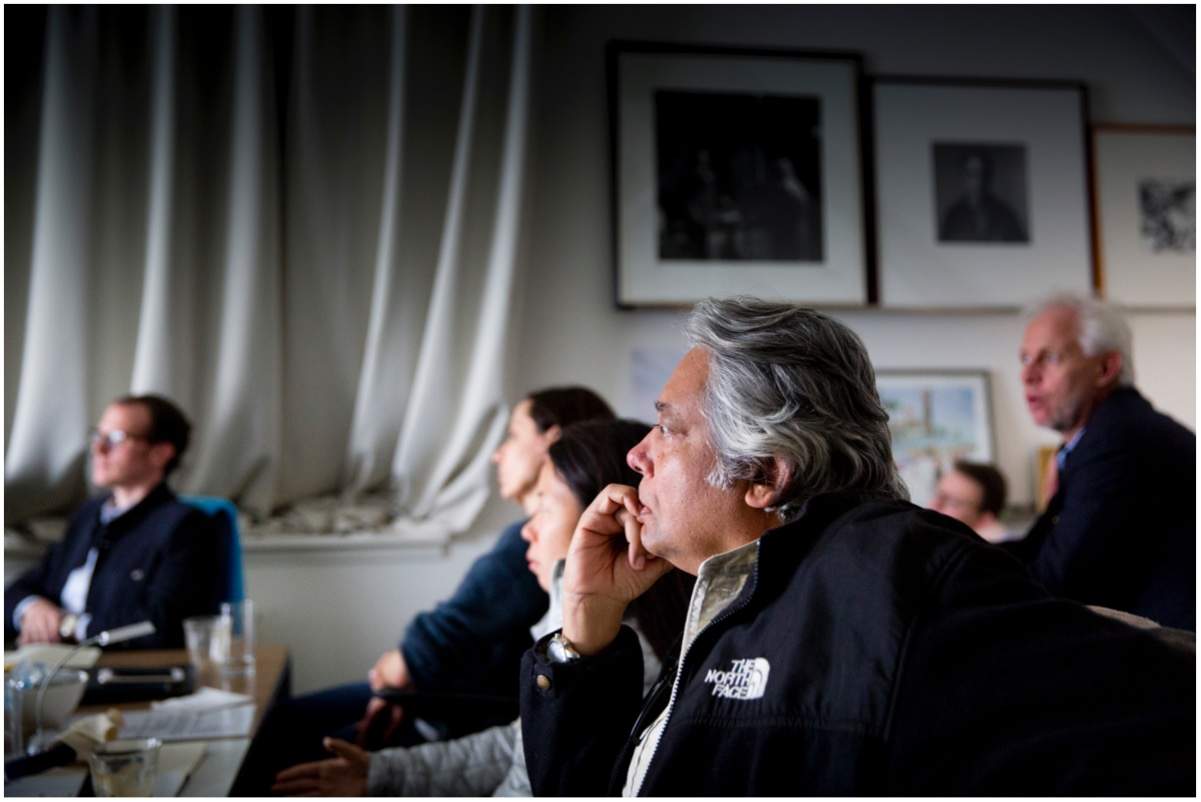
Documentary Jury at WPP 2016. Photograph by Frank van Beek / @hollandsehoogte
So let’s talk about that first round of judging when there’s so many images to go through, and yet you don’t have the liberty of time to go through the captions and text from the photographers et cetera. Basically you’re left to your own devices to contextualising the image at that point and time. What are your thoughts on that – where you are responding to an image purely based on the image alone?
It has its pluses but it has a lot of minuses also, especially in the documentary jury I was in, looking at contemporary issues and contemporary issues stories, The danger of a complex way of telling a story getting lost is high if you don’t have at least a title or a location. We’ve made recommendations on this. We don’t need to know the entire caption. There is no time for that. And the thing is that if we read the caption completely as it was written, it can cloud or colour our judgement of the image too. Basic and simple information like “deforestation in such and such place”. Perfect. It’s enough context for us to then to look at the approach in a manner where you cannot see deforestation immediately in the picture. And I think the real need now is for complex storytelling when so much of it is formulaic.
I understand it’s a huge task. I’ve seen the live broadcast of the POYi judging and their first knockout stage is kind of the same process – in, out, in, out. It’s an interesting question. You’re left to your own devices when you judge the picture without any text. Obviously with the dominant world issues people will have a lot more context because they’ve seen it in the media but the smaller ones without coverage will suffer.
One good thing is that the World Press Photo has a diversified jury. Our jury had an American, a European, two Asians, and a Britisher. Sim Chi Yin who you know. Simon Norfolk and myself. Vaughn (Wallace) and Michaela (Herold).
So tell us about that dynamic.
It was a good dynamic. Everyone raises their own issues and bring their own experiences. Sometimes you can recognise something and be able to respond to it when others are floundering. You know like what is this story about. That really helps. Personally I think we hit it off very well.
The WPP 2016 Contest Report said “we need to encourage global diversity by supporting talent in Asia beyond China.” China is the top country for entries at 1,014, almost double that of USA at 512. India is at ninth spot with 153. Someone asked me recently why other countries like Japan, South Korea and Indonesia seem absent. What are your thoughts on all these stats?
This is a question you should ask Sim Chi Yin too. She has some knowledge about this. One of the conditions for submitting to the World Press Photo Contest is that you have to be accredited in some way or another. China has the largest number of associations of photography in the world and people in one way or another are accredited to them, so that gets reflected. Secondly, there are now one or two people who have set up companies that help photojournalists submit their work for a fee. We may laugh at it but obviously they’re taking it seriously you know.
China has always been ahead in terms of the number of submissions. I would have expected much more from India but a lot of the good photographers have deserted the media, moving away from the media. So that’s the problem. I don’t know how else to explain. So I don’t think it’s just a question of regional diversity. Like I said earlier, it’s a question of diversity in the kind of photography.
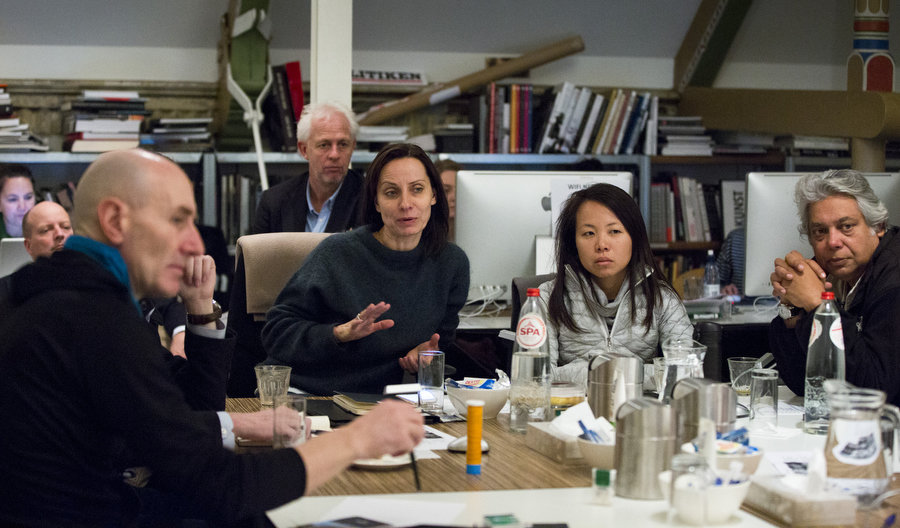
Documentary Jury at WPP 2016. Photograph by Frank van Beek / @hollandsehoogte
Some would say that competition is good. Could World Press Photo do with a competing contest offering an alternative, broader approach to photography?
This is a question that is always double-edged. It’s like the same question of there’s so many photo festivals. To have more photo competitions is actually good in one way because it allows, like you said, each one to be better. But there is also a big downside, that is there will be a lot of repetition. And if there’s repetition and everyone is doing the same thing, the same kind of images are coming, and the same images are winning, then in the long run you wonder why the hell do you have five or six. What’s the point of it? That’s the question, for example, that Dinesh and I are asking ourselves. If there’s so many photo festivals is there a reason for us to continue with Delhi Photo Festival? Not that we are going to stop it. But if we don’t ask that question then we will only repeat what everyone else is doing. And they will repeat what we have been doing. And so it’s F-ing boring for everyone you know.
Personally I feel that World Press Photo has a fantastic reputation and as a place – just like maybe the Pulitzer Prize for literature or whatever it is. Not to say that regional contests shouldn’t come up. They should come up. I mean It’s so sad that India used to have the Indian Express Photojournalism Award every year and they discontinued that. If you energise Indian photojournalism then the next step would be that it will in turn energise the World Press Photo. And I think those things are important. I don’t know if setting up too many competitions that are competing with each other is a great idea. Complimenting each other may be a better idea. I don’t know if that is possible. Everyone wants to be the first and the leader, the only one, the supreme. Haha. That’s a problem.
Further more on competition… the topic of a recent discussion I had was the rise in the number of photo festivals in Asia the past few years. This is noticeable in India and in Southeast Asia. You just touched on a bit of it but do you want to elaborate further? What are your thoughts on this?
I’m a photographer right? So when people tell me there’s so many photo festivals happening in India, I say look, as a photographer I am very happy. The principal thing of a photo festival and the principal reason was that there was a demand from younger photographers that they wanted a neutral, democratic public space to show their work in. Because of the shrinking of the media, I mean you can show on the net of course which is brilliant. But it is one of those ironies of our modern times that digital freed up photography and we have so much of it now, but it actually shrunk the space in which we can show the work. Apart from the internet and the web, the galleries have become even more restrictive. I mean, India has two photo galleries. So how many shows can they do in a year? Five? Six? Each? That’s about it. Then they become exclusive spaces. In fact, even the galleries are telling me now that the festival is actually a better space for them to be in. Because it’s one open space where people can access, people can come and see work and show work. So, as a photographer I am very, very happy. But then if you asked me… The Delhi Photo Festival has spawned, in the six years it has been around, probably about 25 other festivals. I wonder what the difference is between all of us. I don’t see much of a difference. Haha. Except regionally, and in different places. I don’t know. Eventually we might just bore each other to death. Until we start defining ourselves.
Now if we look at the two most important Asian festivals I think till now – Angkor Photo Festival and Chobi Mela. I think Angkor has its position very clearly defined, and for me that makes it a very important festival. Although I haven’t been there myself. They focus so much on education. Chobi Mela was also very different because it was very, very political. And it had political activism at its core. Now that is going out of Chobi Mela also. Because its got the backing of Pathshala, a very important school, it also makes it slightly different. But Chobi Mela is no longer about political activism the way it was earlier. So their character is changing too. So now I wonder what’s going to happen.
I mean, on a regional, country level, for China to have a photo festival, for Bangladesh and India, it’s not a problem. But I’m more worried about what’s happening here. Dinesh went for one festival this year and I went for the other one. In fact, we took almost 25 works from the Delhi Photo Festival to the Chennai Photo Biennale. The problem with that is it’s all the same format. You are showing work; it’s almost the same kind of work. It’s the same people who come for it. It’s the same people who access it. And it’s the same speakers, the same projections. I don’t know. That is going to become a problem. The Jaipur Literature Festival started some years back small, and now it’s mega. Huge! Following that, there’s 75 literature festivals in India now. I don’t know what the fuck they are doing. Hahah. I hope the photo festival stuff doesn’t go that way.
But are the 75 festivals funded by the state or townships or privately funded?
Privately funded. Sometimes the state. A newspaper or organisation. All different.
So this question is on your and Dinesh’s minds moving forward?
Absolutely. It is very, very important. We’re not abandoning the Delhi Photo Festival by the way. Haha. I think we will focus on certain core principals and ideals going forward. In 2011 when we did the Delhi Photo Festival, the reason for doing it was because there was no other photo festivals in India. Next was you need to get it to a democratic space, you need to open it up and you need to have a community… that also we managed to do to some extent. So many of the reasons why we started the festival are being achieved. So then we have to find a reason to go ahead.

View of some of the outdoor exhibitions at the Delhi Photo Festival 2015. Photograph by Hajra Ahmad Ansari.
I remember during the call for submissions at the last Delhi Photo Festival, you publicly expressed some frustration at the reception and also quality of submissions from local photographers in India. I suspect that this issue is not unique to India although circumstances may differ. I hear of similar sentiments from others. What are your thoughts on this and how possibly this can be improved?
This is definitely an issue and problem. Now we have a Delhi Photo Festival, supposed to be the first Indian Photo Festival, and we don’t show enough Indian work. For this we get criticised roundly. At the same time within our own jury, people say that look how can you compromise on the work? Compromise the quality of the festival by putting in weaker work. That’s not what festivals are meant to be. And both things are valid.
Now the fact is the Delhi Photo Festival has mainly been about about long term projects and larger bodies of work; there are not enough people working on long term projects in India. The majority of the people (photographers) are still within the media, working for newspapers and magazines, or are involved in advertising and fashion. Funnily, we never get any submissions from them. Now we’ve agonised over this for quite some time. We’ve heard that the fashion and art kind of photographers have said that the Delhi Photo Festival is very documentary in nature and there’s nothing in it for them. Photojournalists on the other hand tell us there’s nothing in it for them because it’s all arty farty stuff. So we can’t seem to please anybody. I take that as a compliment. We have clearly talked amongst ourselves that in Delhi Photo Festival we do not want to show work that is typecast by genre. We want to show work that transcends genre. Maybe a work that is landscape photography, we are not showing it because it’s landscape photography, but because it’s great photography. We may have work from any genre but we’re not interested in the genre itself.
There’s not enough work done in India for us to select good work. India gets the largest number of submissions to the Delhi Photo Festival. Definitely, almost half. And more than half of it is trash. (Shrugs) This is something that we campaign about and reach out to people. But to create a body of work takes two to three years. It is not easy. If we alternate in three or four year terms we might find some good work again. There is a certain thinking in our process that maybe we shouldn’t rely totally on submissions any more, that we go out looking for work. Because if the person is not submitting the work then we’re not choosing it. We need to go out. Maybe that way we’ll be able to get some good Indian work or regional work in. So these are all valid criticisms and problems.
So I guess this all points to the question on what you think is the role of a festival? Especially relevant from when you first started and now where you are asking that question again. What are some of your thinking?
So this is one of the basic reasons a festival is important; it shows to people and photographers what is possible in photography. It should bring the best contemporary work to the audience. It’s also a delight to see physical prints. Installed in a certain way. Opening up the imagination in people. Over the years, I’ve seen a lot of younger photographers go back feeling very energised from the Delhi Photo Festival. And pumped up. In India, you will see the results of this after some years. I think a very good example of this will be Chobi Mela and Pathshala. Look at what is done there. But that’s a deadly combination; to have a fantastic photo school and a photo festival. Angkor Photo Festival has consistently produced photographers who have gone on to do fantastic things. That’s their biggest contribution. And I wish the Delhi Photo Festival will find a meaning also. We could become completely educational now. Sometimes our own team criticises us that we spend so much money on installations and showing the work; let’s just have projections and let’s just have talks. We’ll spend much less money and do a lot of good. True. But I think it is also necessary to show work. To have it in a park and have people come and see it and what it could be. These things have a long term ripple effect. What will they be? One just gambles on these ideas.
Continue to Part 2 of our Interview with Prashant Panjiar
Share

